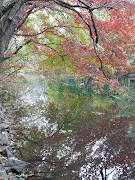Just published a new collection of poetry titled Earth Songs II. It’s a sequel to Earth Songs: New & Selected Poems, published in 2003. The new collection commemorates family members and friends who are no longer with us and a now fading time when peacefully protesting senseless wars and the government’s ill treatment of injured soldiers seemed to have a hope of transforming America into a more caring culture.
Amid these graveyard thoughts, written during
sleepless nights and Warrior Writers workshops, sometime zestful poems emerged
like spring flowers, renewed displays of Nature’s healing powers. These poems
were nourished by the kindness of friends, relatives, lovers, strangers, and by
treks in astounding outdoors places, where battered spirits can be renewed.
Come See
A flare of flowers, a sunset
aflame—
I capture rapture with my
camera,
In a Zen penning of a poem—
And such moments, forget
what’s lost
Commemorating
Peace
When
I was growing up,
The
whole village stopped
For
a moment of silence
At
the 11th hour of the 11th day
Of
the 11th month—
Armistice
Day.
It
was treated seriously,
Like
Arbor Day,
When
we planted trees—
Ancient
holy days now,
When
people commemorated peace
And
spring planting.
Early
Warning
Winter
dropped from the October sky
Two
days before Halloween—
Tree
branches smothered in snow
On
summer leaves snapping deep into the night
Made
darker by downed power lines
Global
warming! skeptics scoffed—
As
this part of suburban civilization
Staggered
for days without electricity,
Towns
closed schools, postponed Halloween
Until
tangled wires and lives are restored
The
paperback book, listed at $10, is available at lulu (with a 10 percent
discount): http://www.lulu.com/shop/jan-barry/earth-songs-ii-poems-of-love-loss-and-life/paperback/product-23822398.html









